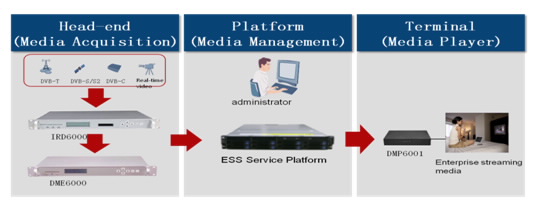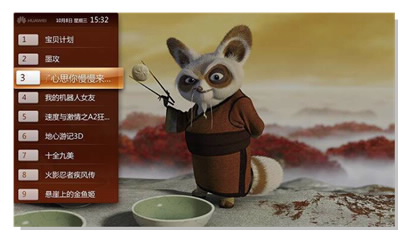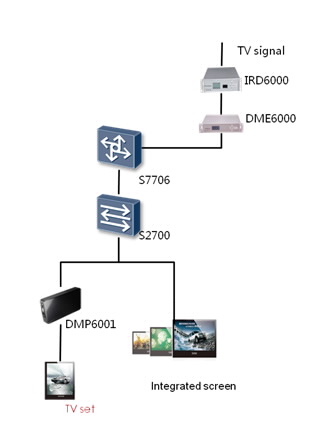Application Scenario:
How can hotels improve their competitiveness? Live television alone is no longer an attractive service, given the availability of interactive television, which can help attract customers and enhance a hotel’s competitive edge. Huawei’s Internet Protocol Television (IPTV) system provides rich functionality over the IP network, including live television, video on demand, time-shifted television, travel information, weather conditions, and other services, effectively strengthening a hotel’s competitiveness.
Description
The Huawei IPTV system supports multiple functions such as live television, video on demand, music player, message push, and more.
Live television: The head-end processing system combines audio and video capture, audio and video compression encoding, network transmission, and control function input and output. The system uses the latest H264 compression encoding and can transfer high-quality High-Definition (HD) live television through the IP network.
Video on demand: This function plays the programs upon request from the guest. Content is saved as media files and metadata by the provider and listed on the Electronic Program Guides (EPG). It can be used to pause, fast forward, and rewind by the user while viewing.
Other augmented services: These include a personalized homepage, music retrieval, scrolling captions, message pushing, cost inquiry, image browsing, weather forecasts, local information, and a variety of other value-added services.

Structure of IPTV Solution
The IPTV video system includes three components:
Head-end disposing subsystem: Receives, demodulates, decodes, and outputs the broadcasts and Terminal Services (TS) live television unicasts.
Ethernet Service Switch (ESS) Service Platform subsystem: Provides user management, program management, billing management, account/set-top box management, statistics, EPG management, and log management.
Terminal subsystem: provides GUI interface to playing program for users.
1. Unified broadcast and control functions reduce operation and maintenance costs.
The Huawei hotel ESS system is a synthesized multimedia service system, which can enable several guest services, such as on-demand multimedia, live television, television messaging, digitized information services, and others. The system uses unified video capabilities to support these functions, and a unified management system, saving on investment and increasing system stability but also reducing administrative burden and maintenance costs.
2. Unique EPG design enhances guest experiences

EPG interface designed without User-Centered Design (UCD)
In an EPG interface designed without UCD, guests must go through three layers to find a program due to the depth created by program list page. Guests must frequently switch up and down, left and right.

EPG interface designed with UCD
In EPG operation interface featuring a UCD design, navigating and choosing programs does not block the background video. Programs can be chosen by using only the up and down keys or by using the number keys for selection based on program number. This user-friendly design provides a better guest good experience.
3. Strong expandability and upgrades protect customer investments
Huawei’s hotel ESS system is a mature system with strong expansion and upgrade capabilities, offering scalability both in terms of adding users and expanding the operational mode. Not only can customers easily upgrade the system, they can also take full advantage of their existing hardware and software, further protecting their investment.




